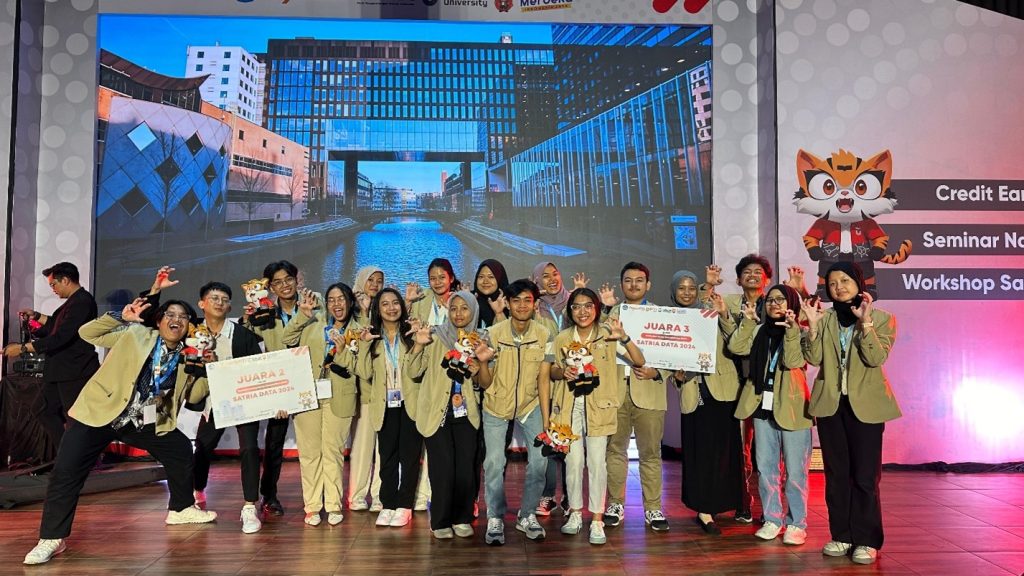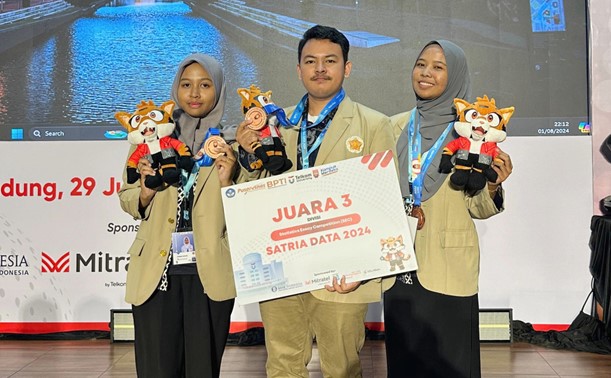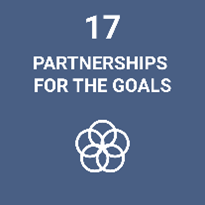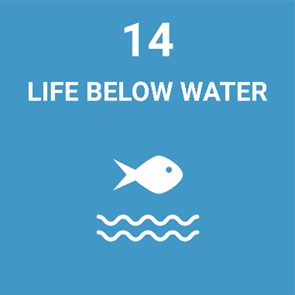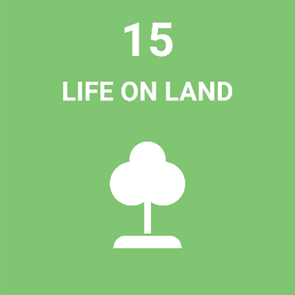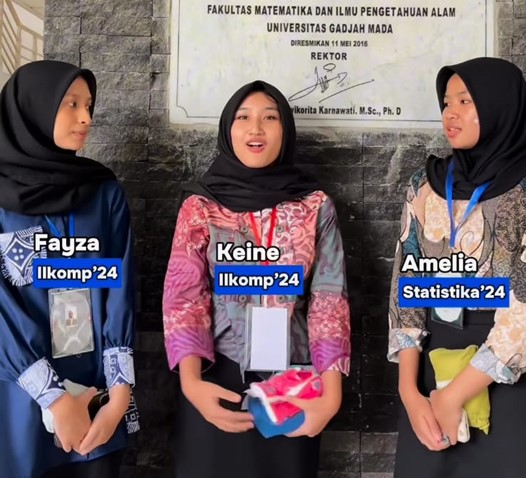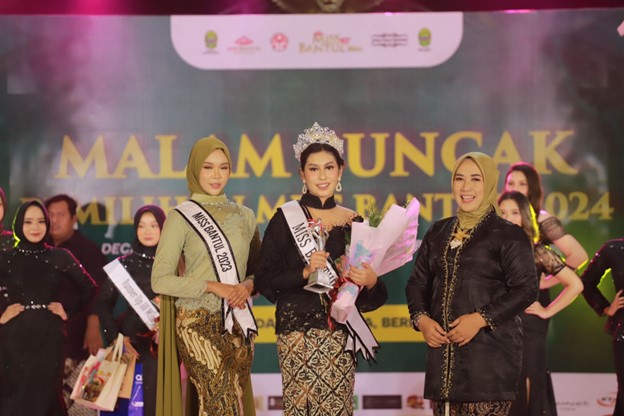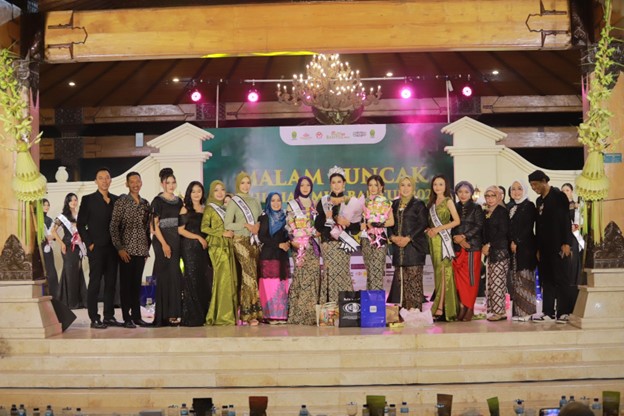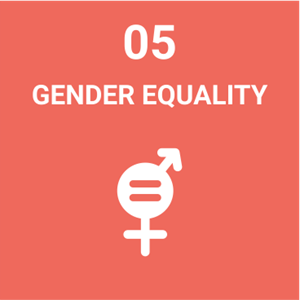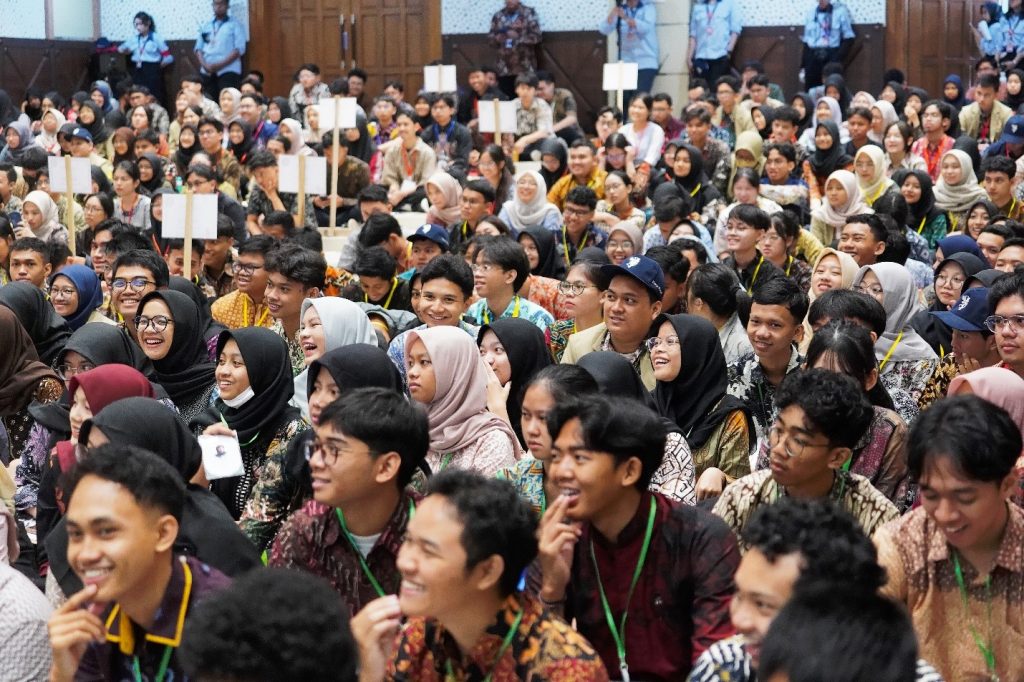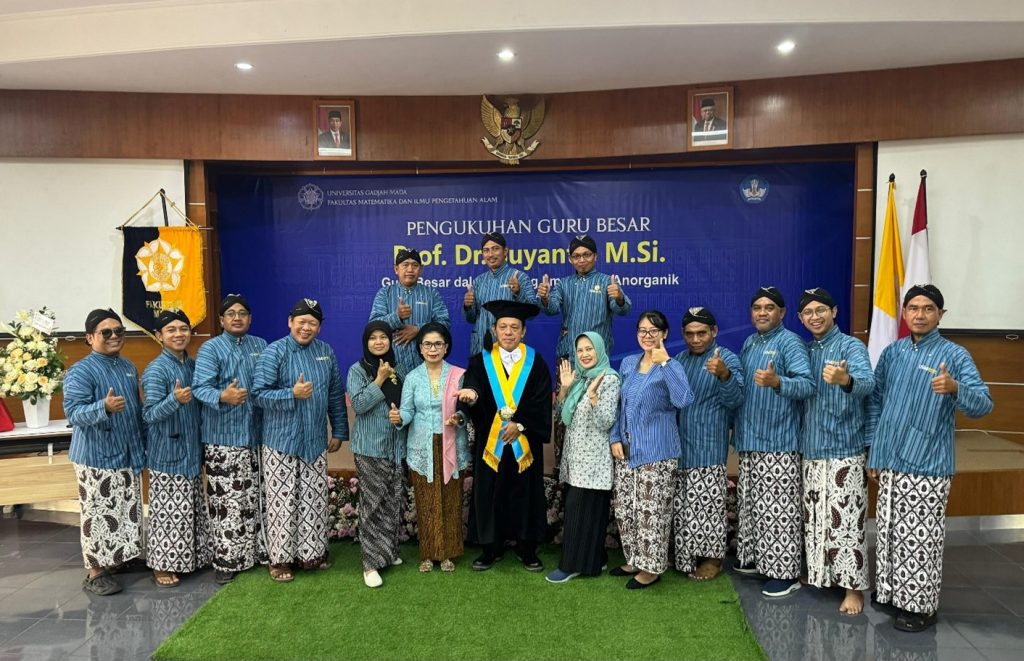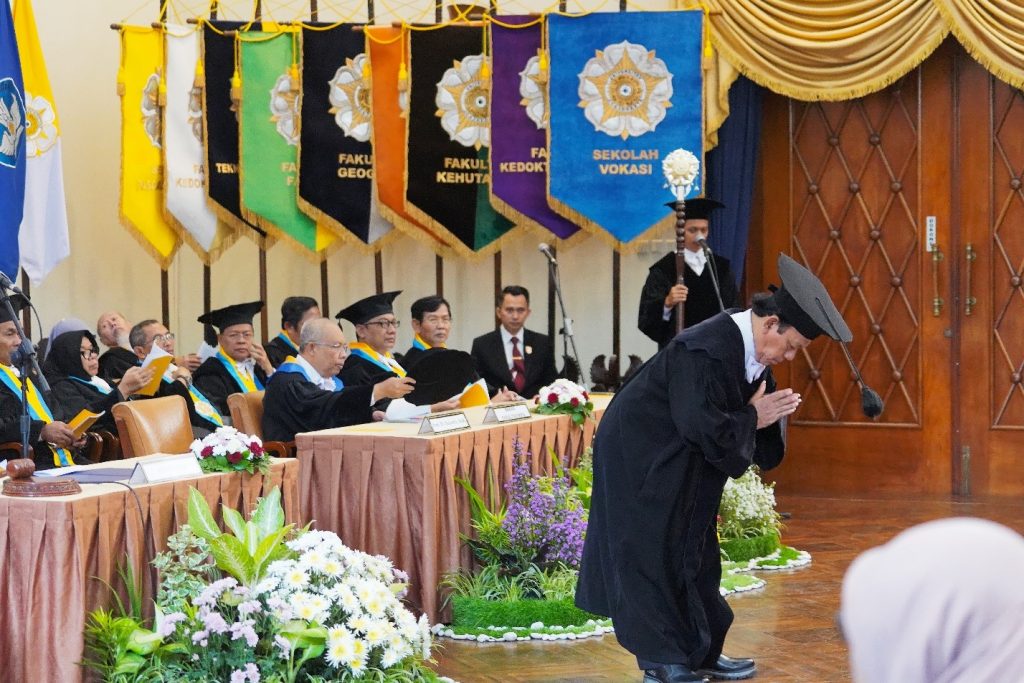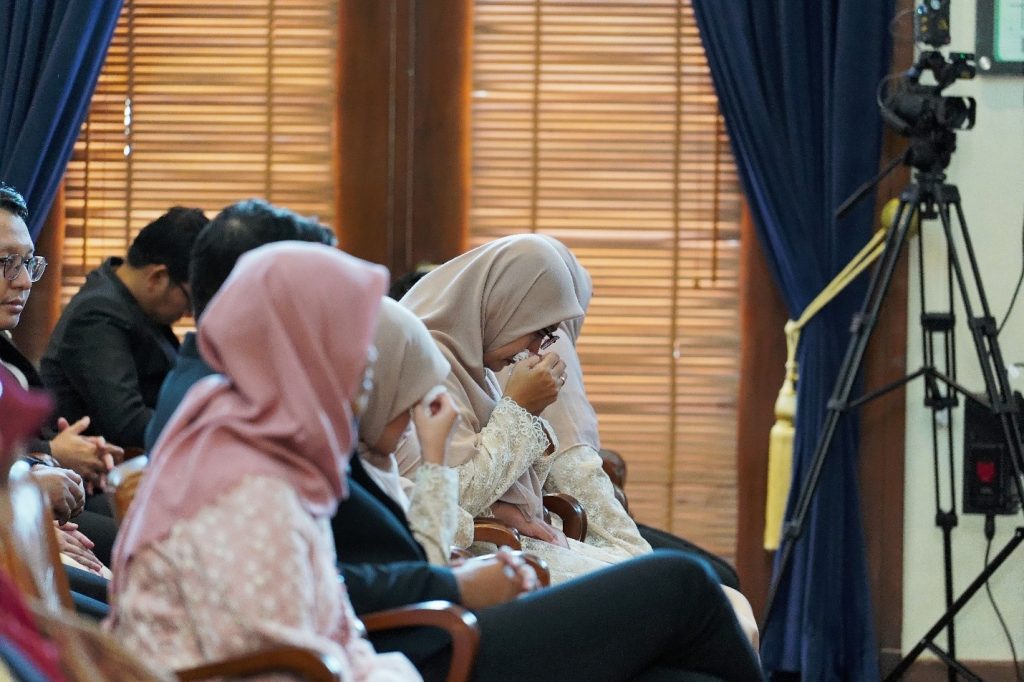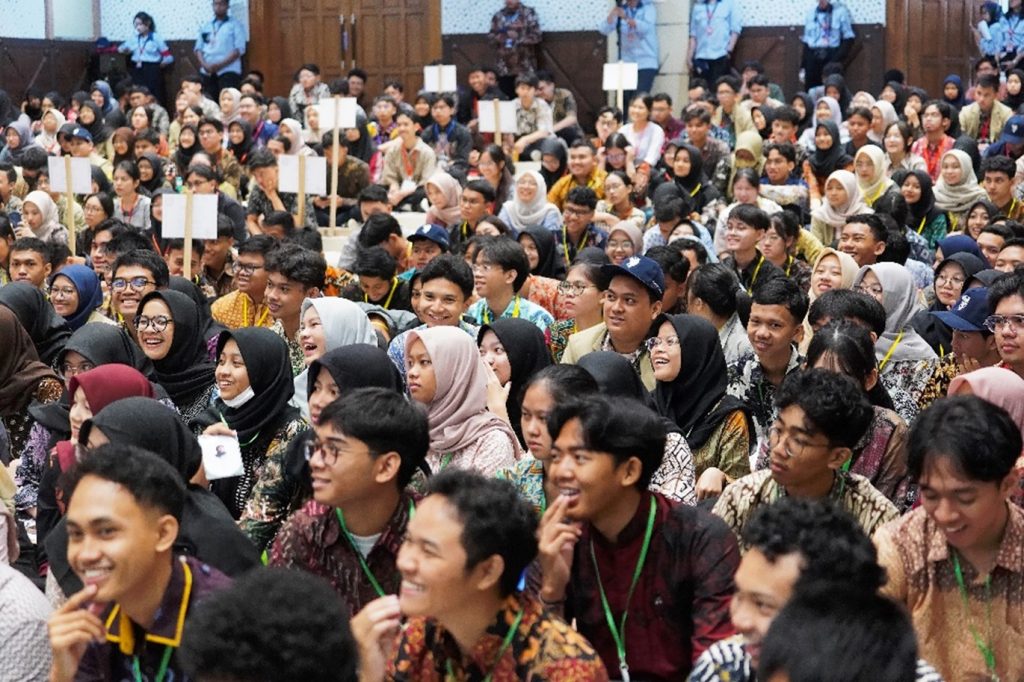
Meriahkan Pionir Pascal 2024, Intip Kesan Pesan Menarik dari Gadjah Mada MIPA 2024
Kemeriahan Pionir Pascal kembali menjadi perbincangan hangat. Gebrakan baru di Pionir Pascal 2024 ini membawa banyak tema unik dan action yang berbeda. Tak hanya itu, Gamami (panggilan untuk Gadjah Mada MIPA) disuguhkan oleh beberapa persembahan selamat datang dan wawasan menarik selama Pionir Pascal hari pertama dan kedua.
“Aku pilih Geofisika sebagai pilihan kedua untuk antisipasi dari pilihan pertamaku yaitu Teknik Geologi,” papar salah satu mahasiswa baru yang berhasil lolos di Geofisika FMIPA UGM.
“Aku senang mempelajari matematika dan keuangan, dan ternyata 2 hal ini bisa saya temukan di jurusan Ilmu Aktuaria!” papar salah satu mahasiswa baru yang berhasil lolos di Ilmu Aktuaria FMIPA UGM.
Mereka juga menjelaskan bahwa pandangan mereka terhadap Program studi yang dipilih mulai terbuka setelah rangkaian Pionir Pascal sesi keprodian dan himpunan di hari pertama. Sebab dari rangkaian acara itu Gamami mulai tergambar lebih luas dan terbuka terkait mata kuliah dan prospek kerja lulusannya. Selain itu juga karena penampilan profil lulusan Ilmu Aktuaria dan Geofisika yang sudah bekerja di berbagai perusahaan membuat Gamami mulai bersemangat terhadap dunia perkuliahan.
Sesi talkshow dan bincang alumni juga menjadi daya tarik untuk gamami dari acara itu mereka mulai tergambar untuk prospek kerja yang luas dan menjanjikan hingga keluar negeri. Selain itu rangkaian acara Tour De Mipa yang menampilkan UKM di FMIPA hingga pengenalan sistem kuliah seperti KRS juga menjadi kesan yang menarik untuk Gamami.
“Saat hari terakhir closingan ada nyanyi kita bareng-bareng itu jadi kesan seru dan dari Tour De Mipa aku jadi tahu kemana aku harus pergi atau hubungin kalo aku nantinya ada masalah selama masa perkuliahan,” papar Damai perwakilan mahasiswa baru Geofisika, dalam wawancara online, Rabu (31/7).
“Yang paling membekas itu saat opening yaitu drama musikal, dramanya bagus, lucu dan gemas!” papar Intan perwakilan mahasiswa baru Ilmu Aktuaria, dalam wawancara online, Rabu (31/7).
Dukungan dan motivasi yang diberikan oleh Fakultas MIPA terutama program studi Geofisika dan Ilmu Aktuaria dalam rangkaian kegiatan Pionir Pacal menjadi cerminan SDGs poin 4 berupa Pendidikan berkualitas dalam menunjang aktivitas mahasiswa baru Ilmu Aktuaria dan Geofisika FMIPA UGM.
Penulis: Ratih Cintia Sari
Editor: Febriska Noor Fitriana
Foto: Hero Prakosa Wibowo Priyanto
